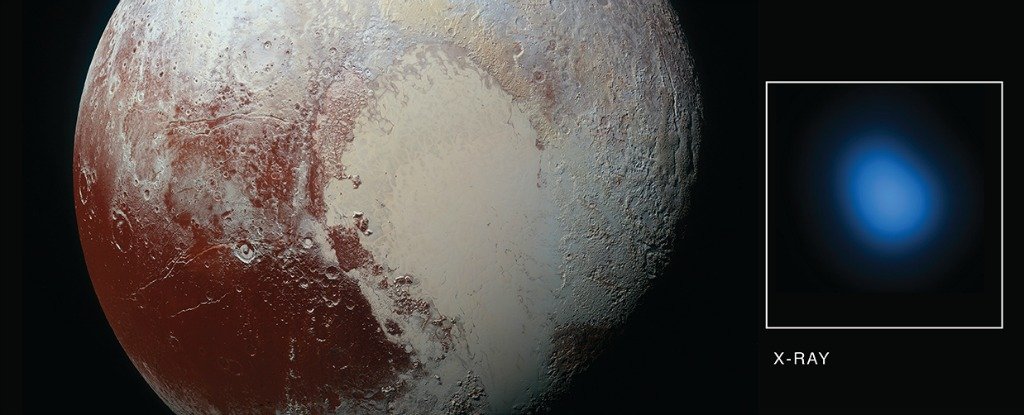Pluto is emitting X-rays, and it's challenging our understanding of the Solar System

This is so strange.
Astronomers working with NASA’s Chandra X-ray Observatory have witnessed everyone’s favourite dwarf planet, Pluto, emitting X-rays, and it's the first time an object in the Kuiper Belt has been found to do so.
This strange discovery could help researchers understand more about Pluto’s atmosphere, as well as the atmospheres of other objects at the very edges of our Solar System.
"We've just detected, for the first time, X-rays coming from an object in our Kuiper Belt, and learned that Pluto is interacting with the solar wind in an unexpected and energetic fashion," said team leader Carey Lisse, from Johns Hopkins University.
"We can expect other large Kuiper Belt objects to be doing the same.
The team was made aware of the X-ray emissions during the New Horizons mission in 2015.
As the craft headed out to the distant planet, which lies at its furthest point 7.5 billion kilometres (4.67 billion miles) away from Earth, Chandra astronomers observed Pluto on four separate occasions, finding evidence of an X-ray glow each time.
This is a surprising discovery, because unlike Earth and other celestial bodies in our Solar System, Pluto lacks a magnetic field, and is extremely far away from the Sun - two factors that strongly suggest that X-ray emission is impossible.
"Before our observations, scientists thought it was highly unlikely that we'd detect X-rays from Pluto, causing a strong debate as to whether Chandra should observe it at all," said team member Scott Wolk, from the Harvard-Smithsonian Centre for Astrophysics.
"Prior to Pluto, the most distant Solar System body with detected X-ray emission was Saturn’s rings and disk."
Despite the doubts, Lisse knew from previous research that the gas surrounding planetary bodies can interact with charged solar wind particles to create X-rays - an hypothesis that is now backed up by the Chandra observations.
But the weird thing is that Pluto is emitting far more X-rays than a body with only gas surrounding it should, at such a vast distance from the Sun.
While there's still a lot to figure out here, the team says that the emissions might be caused by interplanetary magnetic fields pushing more solar particles toward Pluto, causing more emissions that they would typically think.
Or it could be that there's a longer trail of gases lingering behind the dwarf planet that might have been missed by New Horizons.
Further research will hopefully help us to figure out what's behind Pluto's rather bright X-ray glow, and given that the findings suggest that other Kuiper Belt objects might also emit X-rays, astronomers will probably be looking for proof of that, too.
The team’s work was published in Icarus.
Comments
Post a Comment